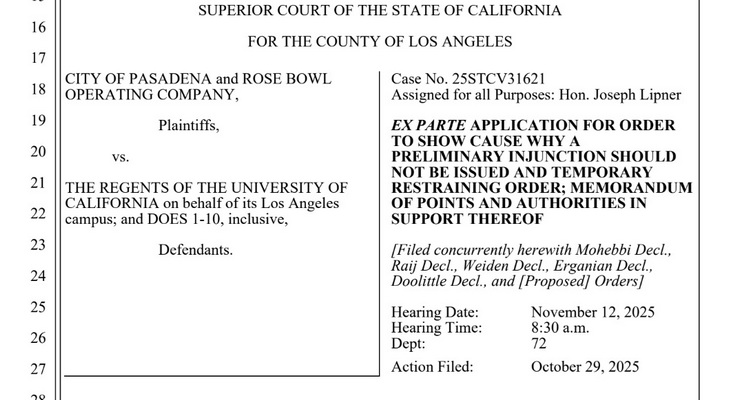
Despite numerous installations in the city to make streets safer for people with disabilities, a local volunteer group advocating for pedestrian safety said there is definitely more that can be done!
Pasadena’s sidewalks need to be repaired more frequently, Topher Mathers from Complete Streets Coalition, a group of volunteers advocating for safe streets in Pasadena, said.
He also suggested installing raised crosswalks (sidewalk level crosswalks) throughout the city and installing many more bulbouts (curb extensions that extend the sidewalk into the parking lane to narrow the roadway) to reduce crossing distances.
Mathers also suggested that the city should implement engineering solutions to slow traffic to improve safety of pedestrians, and provide a more frequent, accessible transit service.
A dedicated funding source for transportation improvements is necessary to get these projects done, said Mathers.
“We look forward to continuing to work with the City’s Disability-Accessibility Coordinator regarding how to support making the City more accessible over time, and we continue to educate ourselves about the abilities and interests of people with disabilities.”
“We support safety and infrastructure for all vulnerable road users, including those with disabilities,” Mathers said on behalf of Pasadena Complete Streets Coalition.
Despite being the country’s largest minority — comprising almost 50 million individuals — people with disabilities are often overlooked and underserved. This is true especially when it comes to pedestrian safety.
In 1990, the Americans with Disabilities Act became a law requiring state and local governments to make pedestrian crossings accessible to people with disabilities by providing curb ramps.
Disabled Pedestrian Safety in Pasadena
Locally, significant steps have been taken to improve the disabled pedestrian’s access and use of the city’s facilities over the years.
According to city spokesperson Lisa Derderian, “the city designs and constructs all new projects within the public right-of-way to provide accessibility to persons with disabilities.”
This includes the installation of curb ramps at intersections for use of wheelchairs and installation of high contrast truncated domes for persons with vision impairments.
Derderian said traffic signals throughout the city are also being equipped with accessible pedestrian signals that provide an audible notification of the pedestrian signal indication and push buttons that provide a large surface area and respond to low pressure contact.
In addition, Derderian said in roadway warning lights are installed at uncontrolled marked crosswalks at various locations throughout the City.
“Almost all of these installations use video detection to activate the warning lights. As such, a pedestrian is not required to push a button, but is instead passively detected by the video detection system,” said Derderian.
The transit agencies in the city also contributed to disabled pedestrian safety by making their fleet of vehicles more accessible over the years.
“There are several design features that the Pasadena Department of Transportation (DOT) has deployed over the years to address accessibility for people living with a range of disabilities in Pasadena, including; installing new curb ramps that are ADA compliant, replacing existing ramps with ADA accessible ramps, installing Accessible Pedestrian Signals (APS) for people who are visually impaired,” Mathers said.
“Pasadena Transit and the City’s dial-a-ride are accessible public transit systems that include features for people who use wheelchairs/mobility scooters, have sight and hearing issues,” Mathers added.
Exterior announcements with the route number and destination are made from the bus at stops, and announcements of the next stop are also made within the transit vehicle, Derderian said about features for disabled people in the city’s buses.
Accessibility and Disability Commission
The City of Pasadena’s Accessibility and Disability Commission works closely with the city to ensure equal usage and access to public facilities.
According to Derderian, members from the Accessibility and Disability Commission are at times included in project site visits to identify potential barriers to access and recommend potential solutions to eliminate these barriers.
“During the outreach and design process, engineering staff coordinate with the City’s accessibility coordinator to identify ways to ensure accessibility for persons with disabilities is incorporated in the design,” said Derderian.
So far, the Commission provided feedback about accessibility considerations for the Union Street Protected Bike Lane project. The Commission also provided input about the prioritization of curb ramp installation locations in the city.


















